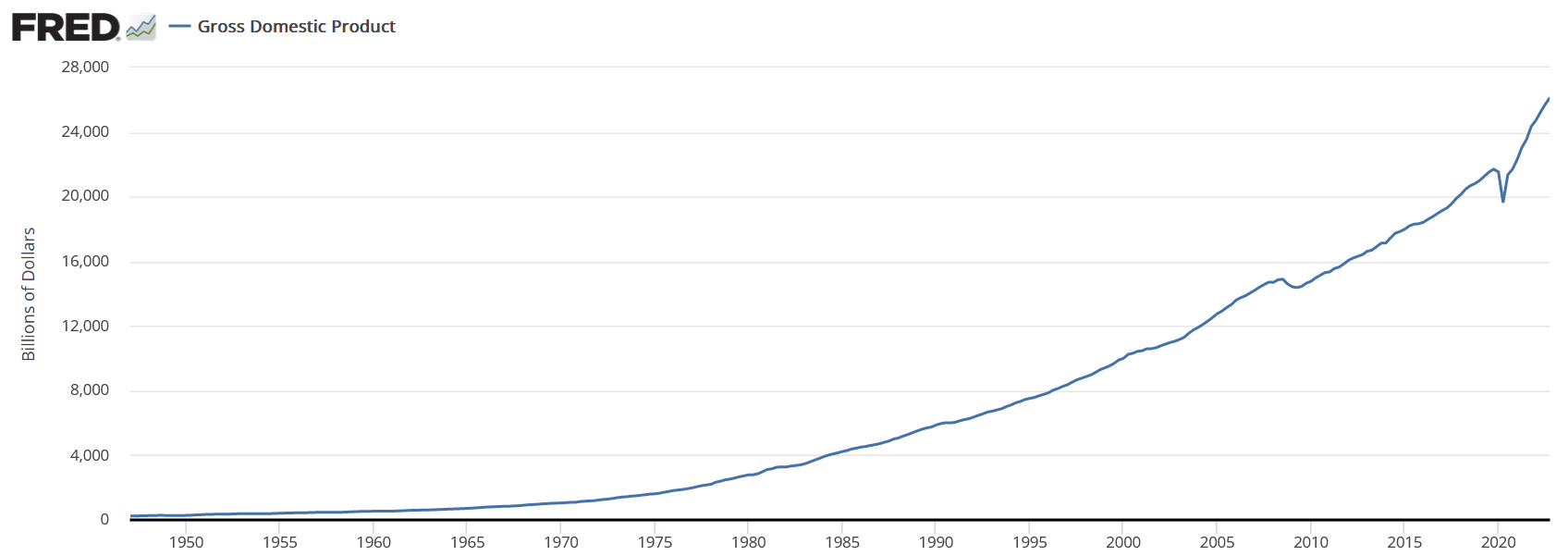
Chart showing the GDP by year, Federal Reserve Bank of St. Louis
Economic Impact
The IHS significantly improved travel. In 1919, the journey cross-country took two months. In 2018, it took 45 hours. This ease of travel boosted the economy. A 1996 study for the Federal Highway Administration (FHWA) concluded that the IHS led to 34% improvement in travel times, reliability, business logistics, market access, and productivity savings. For the years 1960 to 1969, this rate was 47%.

Chart showing the GDP by year, Federal Reserve Bank of St. Louis
Additionally, the IHS improved America’s GDP—the total monetary amount of all finished goods produced in that country during a specific time. The larger the GDP, the stronger the economy.
In 2021, the National Bureau of Economic Research concluded that removing the IHS would reduce the GDP by $619.1 billion (3.9%.) Overall, the economic benefit from 1957 to 1996 is estimated to be $3.5 to $4.1 trillion, adjusted for inflation.